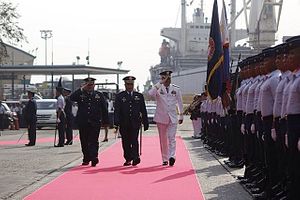This week, the Philippines commissioned the third of ten coast guard vessels it is received from Japan to help boost its maritime and law enforcement capabilities.
As I have detailed previously, the Philippine military, one of the weakest in the Asia-Pacific, has begun to invest more significantly and strategically in its capabilities (See: “The Truth About Philippine Military Modernization and the China Threat“). It is also receiving assistance from a number of key partners, including the United States and Japan.
Under the Maritime Safety Capability Improvement Project awarded to the Japan Marine United Corporation (JMU), the Philippines is receiving ten Parola-class Multi-role Response Vessels (MRRVs). The project is being implemented as an official development assistance (ODA) project, with a tied loan of around 7.4 billion pesos ($409 million) out of the total of 8.8 billion pesos with the rest being sourced from the Philippines (See: “Philippines Receives First Japan Coast Guard Vessel”). Japan will also supply standard spare parts and tools, crew training, ocean transportation and marine insurance.
The delivery of the vessels itself has been proceeding roughly every quarter through 2018 as was originally intended. The first and second Parola-class vessels, BRP Tubbataha (MRRV-4401) and BRP Malabrigo (MRRV-4402), were commissioned to the PCG in October 2016 and December 2016, respectively. And on March 7, the third, the BRP Malapascua (MRRV-4403), was officially commissioned into service as the third vessel.
The BRP Malapascua was commissioned by Secretary of the Department of Transportation Arthur P Tugade. The commissioning ceremony was also attended by the Speaker of the House of Representatives Pantaleon D. Alvarez.
According to the PCG, under the project terms, the MRRVs will be used for the PCG for search and rescue operations, assistance in marine environment protection, law enforcement, relief, and transport. The vessels, which are 44 meters in length, have a standard cruising speed of 25 knots and a range of 1,500 nautical miles.

































